Red Escallonia Escallonia rubra

ABOUT
The plant known as Escallonia rubra, is recognized by its dense, glossy green foliage. The leaves are small and leathery with a serrated edge, giving them a refined texture. Throughout the blooming season, it produces clusters of vivid red, tubular flowers, attracting various pollinators. These blossoms are small yet numerous, creating a vibrant display against the dark green backdrop of the leaves. The overall appearance of Escallonia rubra is somewhat rounded and bushy, which makes it a popular choice for garden hedging and ornamental uses. Its evergreen nature ensures that it provides color and structure to the garden year-round.
About this plant
 Names
NamesFamily
Escalloniaceae
Synonyms
Red Escallonia, Red Clusterberry, Red Escallonia
Common names
Escallonia poeppigiana, Escallonia virgata, Ixerba brexioides.
 Toxicity
ToxicityTo humans
Escallonia, specifically Escallonia rubra, is not commonly listed as a toxic plant to humans. There is limited information regarding its toxicity, which suggests that it is not considered highly poisonous. It is always advisable to prevent ingestion of plant parts if the plant's edibility is unknown or uncertain, as individual reactions can vary.
To pets
Similar to its effects on humans, Escallonia is not commonly known to be toxic to pets. There is little information that suggests Escallonia rubra poses a significant risk if ingested by pets. However, as with all plants, it is prudent to monitor your pets around them and discourage them from chewing on or consuming plants that are not known to be safe. If a pet does ingest part of the plant and you notice any adverse reactions, contact a veterinarian.
 Characteristics
CharacteristicsLife cycle
Perennials
Foliage type
Evergreen
Color of leaves
Green
Flower color
Red
Height
4-6 feet (1.2-1.8 meters)
Spread
4-6 feet (1.2-1.8 meters)
Plant type
Shrub
Hardiness zones
8
Native area
South America
Benefits
 General Benefits
General Benefits- Ornamental Value: Escallonia rubra is widely appreciated for its aesthetic appeal due to its glossy green leaves and bright red flowers.
- Habitat for Wildlife: The plant provides nectar for pollinators such as bees and can also offer shelter for various small wildlife species.
- Erosion Control: With its dense and robust root system, it is effective at stabilizing soil and preventing erosion on slopes or banks.
- Privacy and Windbreak: Due to its bushy growth, it can serve as a natural privacy screen or windbreak when planted in rows or hedges.
- Low Maintenance: Escallonia rubra generally requires minimal upkeep, making it suitable for gardeners seeking low-maintenance landscaping plants.
- Tolerant to Varied Conditions: It is resistant to salt spray and can grow in coastal areas, comfortably adapting to different growing conditions.
- Long Blooming Period: The plant has a lengthy flowering season, often blooming from late spring to early autumn, providing extended visual interest.
- Drought Resistance: Once established, it can tolerate dry conditions, making it a good choice for water-conservative gardens.
 Medical Properties
Medical PropertiesThis plant is not used for medical purposes.
 Air-purifying Qualities
Air-purifying QualitiesThis plant is not specifically known for air purifying qualities.
 Other Uses
Other Uses- Escallonia rubra, commonly known as Red Escallonia, can be used as a natural hedge due to its dense foliage and can be trimmed to particular shapes and sizes.
- Due to its tolerance to maritime conditions, Red Escallonia is a popular choice in coastal gardening to help reduce erosion and withstand salt-laden winds.
- The plant is often used in xeriscaping, a landscaping method that reduces or eliminates the need for irrigation, since it is quite drought-tolerant once established.
- Popular among pollinators, Red Escallonia can be planted to attract bees, butterflies, and hummingbirds to gardens, helping to support local ecosystems.
- The wood of Escallonia rubra is occasionally used in small woodworking projects like crafting of utensils or in marquetry due to its hardness and fine grain.
- In landscaping, the plant is utilized for its rapid growth, making it a quick solution for establishing greenery in garden spaces.
- Its resistance to pests and diseases allows Red Escallonia to be used as a low-maintenance ornamental plant in parks and public spaces.
- Some gardeners use Red Escallonia as a companion plant to provide shelter for more delicate plants that need protection from the wind or strong sun.
- While not commonly used for this purpose, the dried leaves could be used as a natural mulch or compost material to enrich garden soil.
- The colorful and abundant blooms make Red Escallonia a decorative plant for cut flower arrangements in floral designs.
Interesting Facts
 Feng Shui
Feng ShuiThe Escallonia is not used in Feng Shui practice.
 Zodiac Sign Compitability
Zodiac Sign CompitabilityThe Escallonia is not used in astrology practice.
 Plant Symbolism
Plant Symbolism- Resilience: Escallonia rubra, commonly known as Red Escallonia, is known for its hardy nature and ability to withstand challenging conditions, symbolizing the strength to cope with adversity.
- Endurance: This plant's evergreen qualities and its persistence through seasons represent endurance and the ability to persist over time.
- Protection: With its dense foliage, Red Escallonia is often used as a hedge, symbolizing a barrier against negative forces and providing a sense of safety.
- Beauty and Attraction: The striking red flowers of the Red Escallonia draw in pollinators, symbolizing beauty, allure, and the power of attraction.
- Growth: As a fast-growing plant, it symbolizes personal growth and the expansion of one's boundaries.
 Water
WaterEscallonia, commonly known as Red Escallonia, requires moderate watering. During the growing season in spring and summer, it's beneficial to water thoroughly once a week, providing about 1-2 gallons per plant, depending on its size and the weather conditions. Ensure the soil is well-drained and allow it to dry out slightly between waterings. Over the winter months, reduce watering frequency since the plant's growth slows down. Young plants will need more frequent watering until they are well established.
 Light
LightRed Escallonia thrives in full sun to partial shade. It is best positioned in a spot where it can receive at least 6 hours of direct sunlight daily. This plant is adaptable, however, and can tolerate a bit of shade, especially in hot climates where some afternoon shade can prevent scorching.
 Temperature
TemperatureRed Escallonia is hardy and can tolerate a range of temperatures, but it performs best in conditions where the temperature remains between 50°F and 81°F. It can survive in temperatures as low as 15°F but may experience some damage. Always plant it in a location that protects it from harsh winter winds to minimize cold temperature damage.
 Pruning
PruningPrune Red Escallonia to shape it, encourage bushier growth, and to remove any damaged or diseased branches. The best time to prune is in late winter or early spring, just before new growth begins. You can also prune after it has finished flowering to maintain its desired size and shape. A light annual pruning is typically sufficient.
 Cleaning
CleaningAs needed
 Soil
SoilRed Escallonia thrives in well-draining soil with a mix of loam and sand that is rich in organic matter. The ideal soil pH for this plant is slightly acidic to neutral, ranging from 5.5 to 7.0. A good mix can be created with equal parts garden soil, peat, and perlite or coarse sand to ensure proper drainage and aeration.
 Repotting
RepottingRed Escallonia should be repotted every 2-3 years to ensure that it does not become root-bound and to refresh the soil. It's best to repot in spring before the new growing season begins. Choose a container only one size larger to prevent excess soil moisture that could lead to root rot.
 Humidity & Misting
Humidity & MistingRed Escallonia prefers moderate humidity but is quite adaptable and can tolerate the drier air found in most home environments. Try to maintain humidity levels that replicate its native coastal environment, although this plant is quite resilient to fluctuations in humidity.
 Suitable locations
Suitable locationsIndoor
Choose bright spot; water when soil feels dry.
Outdoor
Plant in sun; protect in harsh winters; water regularly.
Hardiness zone
7-10 USDA
 Life cycle
Life cycleEscallonia rubra, commonly known as Red Escallonia, begins its life cycle as a seed that germinates in well-drained soil. The seedling emerges and grows into a young plant, developing a woody stem and evergreen foliage. As it matures, the plant increases in size and begins to develop flower buds in response to favorable conditions such as sufficient sunlight and water. During its flowering phase, Red Escallonia produces clusters of small, red flowers rich in nectar, attracting pollinators like bees and birds. After pollination, the flowers produce fruits containing seeds, which, when fully ripe, are dispersed by various means, including animals and gravity. The plant continues to grow and can become a sizable shrub, with some individuals capable of living for many years while annually repeating the flowering and seeding cycle.
 Propogation
PropogationPropogation time
Spring-Early Summer
Propogation: Escallonia rubra, commonly known as Red Escallonia, is most effectively propagated through semi-hardwood cuttings during late summer or early fall when the plant's growth begins to slow. This method involves taking cuttings of about 4 to 6 inches (approximately 10 to 15 centimeters) length from healthy, disease-free branches. The lower leaves should be removed, and the base of the cutting may be treated with a rooting hormone to encourage root development. Then, the cuttings should be planted in a well-draining soil mix, ensuring the base is adequately covered. The planted cuttings ought to be kept under high humidity and consistent moisture without becoming waterlogged. Roots commonly develop within a few weeks, after which the new plants can slowly acclimate to less protected conditions before being transplanted to a more permanent location.

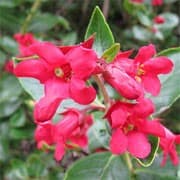
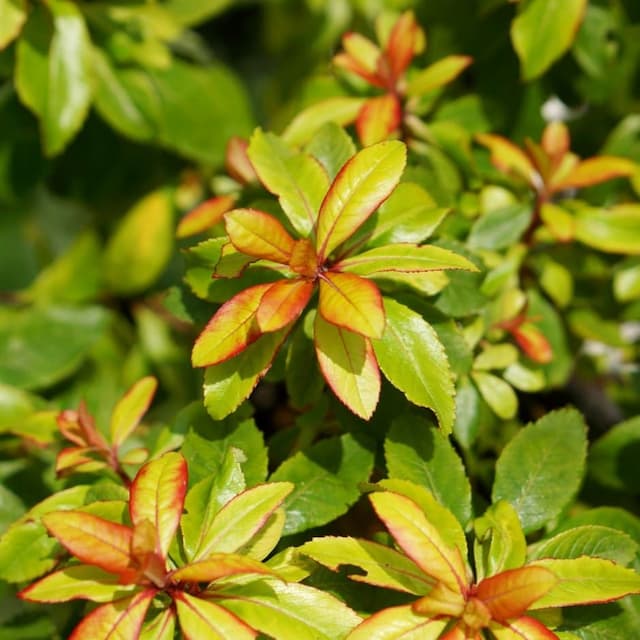
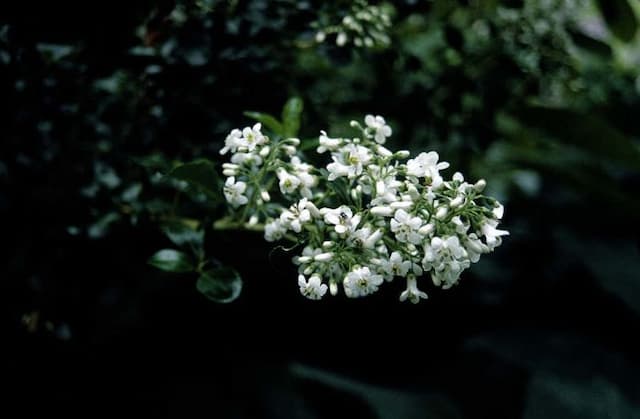

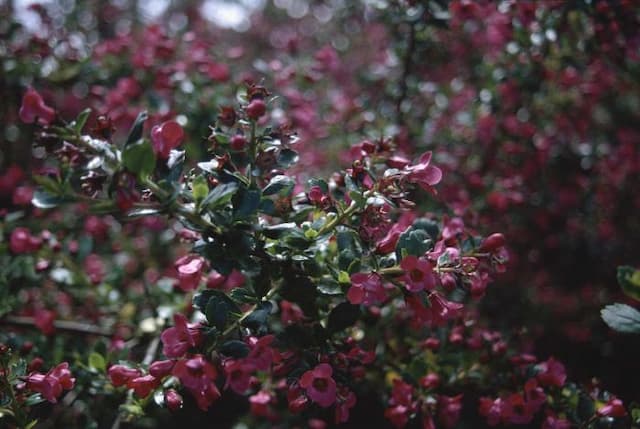
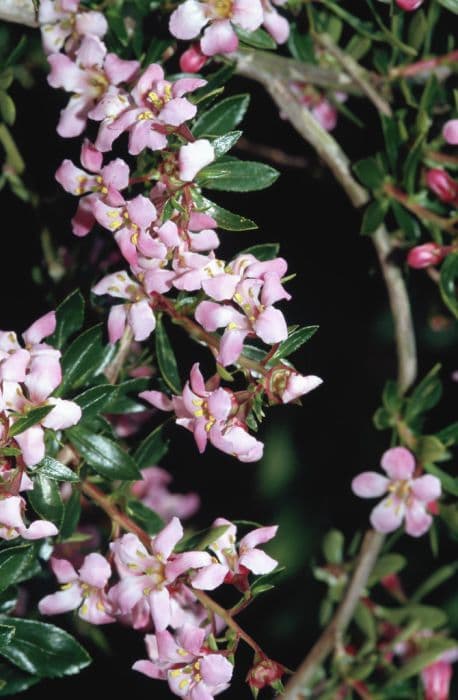
![Escallonia [Golden Carpet]](/_next/image?url=https%3A%2F%2Fplants-admin.emdemapps.com%2Fimages%2Fplants%2F%2Fimages%2F604b59284be41.png&w=640&q=75)
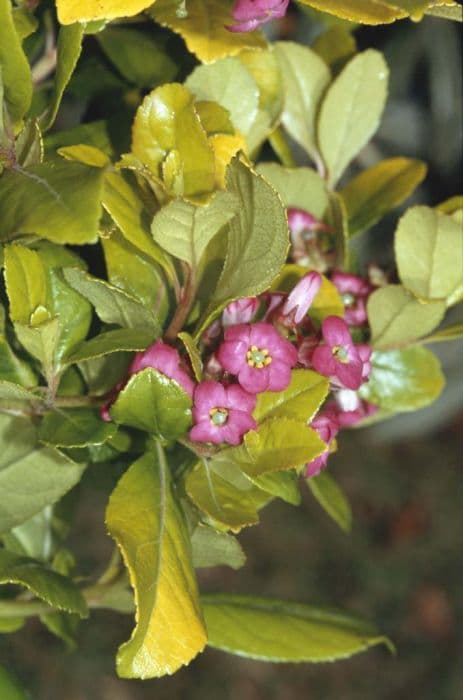
![Escallonia [Pink Elle]](/_next/image?url=https%3A%2F%2Fplants-admin.emdemapps.com%2Fimages%2Fplants%2F%2Fimages%2F604b630962bc2.png&w=640&q=75)